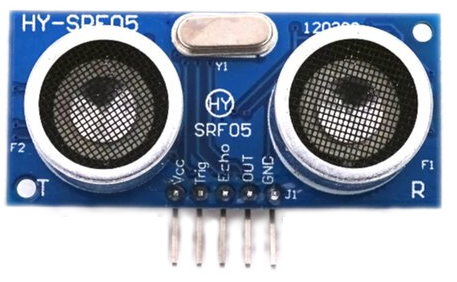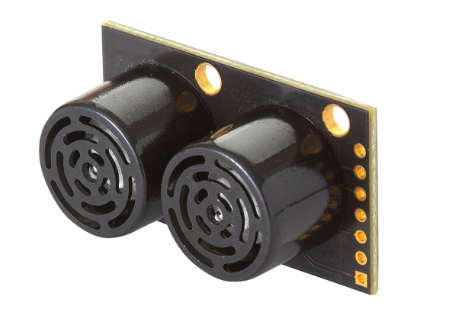This page is a placeholder about ultrasonic sensors, which we hope to flesh out as time permits.
SR04 Ultrasonic Distance Sensors#
 |
I've been using a driver board from PiBorg called the UltraBorg that has both support for four servos and four HC-SR04 ultrasonic sensors, with a support library in Python.
that has both support for four servos and four HC-SR04 ultrasonic sensors, with a support library in Python.
MB1614 HRLV-ShortRange-EZ1T#
 |
The Maxbotix MB1614 is a step up from the SR04 in terms of quality, an intermediate-level ultrasonic sensor, certainly pricier than the SR04 but less cost and complexity than the more advanced SensComp (see below).
The HRLV-ShortRange-EZ1T is our most recommended HRLV-ShortRange-EZ Sensor for people detection, autonomous navigation and well balanced detection.
Product page: https://www.maxbotix.com/ultrasonic_sensors/mb1614.htm
SensComp Ultrasonics#
 |
A more advanced sensor is available from SensComp , which uses a transducer similar to those found in the Polaroid SX-70 Sonar camera, circa 1978. These sensors are have a longer range and are more sensitive than their cheaper brethren.
I contacted SensComp and received more information about their sensors. See the documents attached to this page.
, which uses a transducer similar to those found in the Polaroid SX-70 Sonar camera, circa 1978. These sensors are have a longer range and are more sensitive than their cheaper brethren.
I contacted SensComp and received more information about their sensors. See the documents attached to this page.
 for the kit. I have also included the spec sheet for the Smart sensor
for the kit. I have also included the spec sheet for the Smart sensor itself which can also be purchased separately. Also attached is the code
itself which can also be purchased separately. Also attached is the code for the development kit.
for the development kit.
- Smart Sensor Ultrasonic Development Kit For Arduino

- Smart Sensor Specifications

- Ping_SMRT.ino
 , Arduino code for the development kit.
, Arduino code for the development kit.
According to SensComp there is currently no known Python port of the Arduino C code, but the Ping_SMRT.ino file looks to be relatively straightforward if the included Wire.h and LiquidCrystal_I2C.h library are themselves either ported or portable. But this is certainly a non-trivial effort.